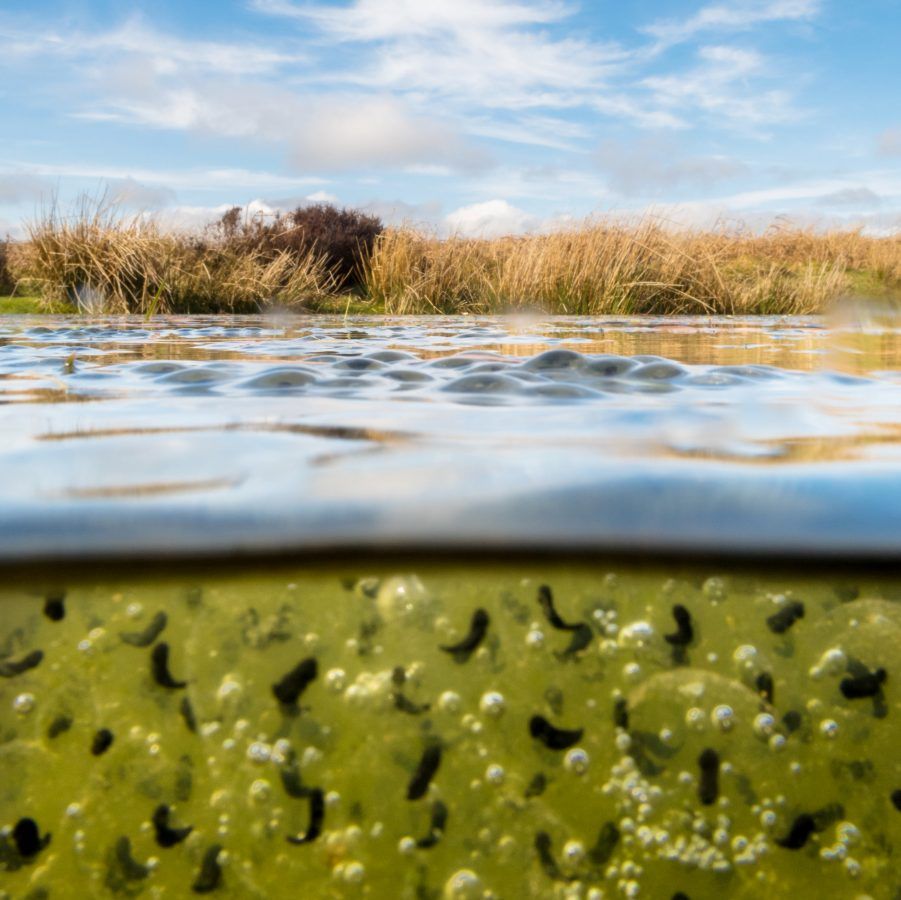
credit:SWNS
Frogs are being threatened by a deadly disease spread by global warming, British zoologists warned.
Over the next 50 years warmer springs and autumns when temperatures reach over 16C – 60.8F – will see a dramatic increase in the risk of Ranavirus outbreaks in common frogs.
Warmer years has seen the infectious virus spread and its severity increase after first being identified in southern England in the late 1980s.
But as average monthly temperatures are expected to exceed 16C in more areas over longer periods as climate change bites, the disease is likely to spread to virtually the whole of the UK.
Up to now outbreaks tend to happen from around May and stops as it cools in October being mainly confined to southern England and the Midlands up to the north west and south Yorkshire – with pockets along the southern Welsh coast and in Devon.
The new modelling study by the Zoological Society of London, University College London, Queen Mary University of London and University of Plymouth suggested outbreaks becoming more frequent from April to October across most of the UK.
If carbon emissions continue at their current rate warmer spring temperatures could see outbreaks starting along the coasts of the south east with a pocket around the Cotwolds and Cambridge by April.
But by May it could spread to all of England, Wales, southern Scotland and most of Northern Ireland.
By October the diseases retreats as northern parts cool but will be still present in low lying Wales and Northern Ireland and most of England.
The findings explain the seasonality of the disease, with outbreaks peaking during the hottest months of the summer.
But disease outbreaks in spring could lead to the mass deaths of tadpoles, which could decimate populations.
Although the disease can be tricky to diagnose the most common symptom is finding a large number of dead frogs in a short space of time.
The animals are often thin and lethargic before death and suffer from a redness of the skin, ulcers or sores, and bleeding.
The study used a three-pronged approach involving cell cultures, live models and historic data from the Met Office and Froglife’s Frog Mortality Project.
Each approach suggests that higher temperatures drive increasing severity of epidemics.
In wild populations, ranavirosis incidents were more frequent and more severe at higher temperatures, and their frequency increased through a period of historic warming in the 1990s.
Lead author Dr Stephen Price from ZSL’s Institute of Zoology and UCL said: “Climate change isn’t something that’s just happening in faraway places – it’s something real and present that’s already had hard-to-predict impacts on wildlife in our own back gardens here in the UK.
“A number of scientists have already alluded to the fact that climate change could increase the spread of disease, but this is one of the first studies that provides strong evidence of the impact of climate change on wildlife disease, and helps to explain how it may facilitate the spread of Ranavirus across the UK.”
ZSL scientists suggested frogs may be better able to cope with infection if they have areas in which they can cool down.
Conservationists and gardeners can help by adding log piles, vegetation or nearby shady patches as well as keeping ponds deep so frogs can cool down and get out of the sun.
This should reduce the growth rate of the virus.
Professor Trenton Garner at ZSL’s Institute of Zoology said: “Many studies in amphibian disease cannot do much beyond saying ‘we have a problem’.
“This research offers a number of options for mitigation; however, this is only a short-term solution of course – if we don’t eventually slow and reverse human-driven climate change, we unfortunately can only expect things to get worse for our amphibians.”
The study was published in the journal Global Change Biology.